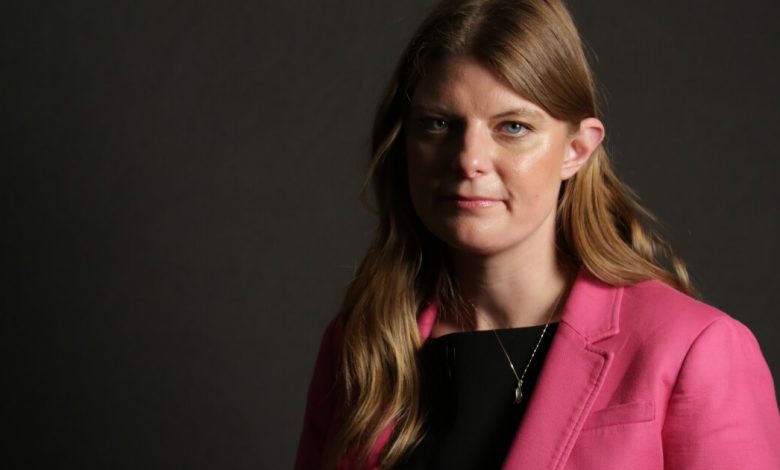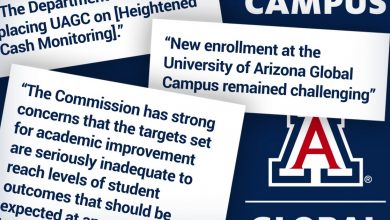A College Adviser Weighs In on a New Requirement

[ad_1]
Sara Urquidez lives and breathes college access. The organization she leads — the Academic Success Program, which supports 17 public and charter schools in Dallas and Houston — Dallas & Houston — helps low-income and first-generation students get through the admissions and financial-aid process each year. For many of them, the Free Application for Federal Student Aid, known as the FAFSA, is a major hurdle.
This year, Texas is among the first states to require all high-school seniors to complete the FAFSA before graduating. As The Chronicle reported on Monday, the approach is widely seen as a promising way to get more federal aid into families’ hands, but experts say such policies by themselves won’t get more students to college.
Urquidez sees some unintended consequences in Texas’s new requirement. Since the beginning of December, her staff has been chasing down FAFSAs from families who, for one reason or another, haven’t wanted to complete the form. And that, she says, has taken advisers’ time away from other important tasks, such as guiding students hoping to attend college through the admissions and financial-aid process: “We’re running a FAFSA mill, to be honest.”
In a recent interview with The Chronicle, Urquidez shared an on-the-ground view of the new requirement and its impact so far on students, parents, and college advisers.
This requirement is meant, in part, to show students who didn’t think that they could afford college to see that OMG, they’re eligible for grants and scholarships, which could make college possible. Are such epiphanies happening?
I haven’t seen that at all in terms of students suddenly realizing they’re able to go to college, or that college is affordable. Completing the FAFSA is not what makes college affordable. Completing an admissions application for an institution that makes sense for a student’s financial situation, and then getting the financial-aid award that makes sense for the family, is what makes college affordable. Just because you filed a FAFSA and got an award letter doesn’t mean that’s the best option for you.
I feel like all the requirement has done is create tension among students who are saying they’re not going to college because they’re going into the military or the work force. They don’t understand why they are being forced to consider college when they already have a plan for themselves. I’m hearing the same thing from parents who say college is not what they want for their children.
For me, that’s challenging because I see the opportunity that higher education provides. But I also understand that for some students and families, there is a real cost-benefit analysis that they have to do. And many have figured out that, at least for right now, college isn’t the goal.
Last year, 80.6 percent of the students your organization serves filed a FAFSA. Tell me about what it takes to get that number all the way up to 100 percent?
We have to be following up with families frequently. It’s not enough to just tell someone that this is a requirement when it’s never been a requirement before. What we’ve done for weeks is to make personal calls to parents, communicating that their students are at risk of not graduating if they don’t complete the form.
Then we’ve been going through their objections, trying to get parents who are reluctant to complete the FAFSA — or students who don’t understand why they have to complete the FAFSA at all — to understand why they need to do this. This gets us into some very contentious situations with families that don’t necessarily understand how this information is being used or why they have to provide it. That takes an emotional and mental toll, and we have to keep calling them until it’s done.
There has long been confusion about what the FAFSA is — and isn’t. It sounds like that’s an ongoing challenge.
Yes. The communication around the FAFSA requirement statewide hasn’t been especially clear. It’s important to tell families, “This is what the FAFSA is. This is how your information is used. This is how it’s not used.”
We are really trying to help families better understand how FAFSA is essentially a standalone. Some students might ask, “If my parents are undocumented, and I submit the FAFSA, is ICE [U.S. Immigration and Customs Enforcement] gonna show up at my home?”
No, the FAFSA is not shared with Homeland Security or immigration agencies. It’s not a loan application. Too often when we implement these policies, we assume that everyone understands it as well as the people implementing it — and that everyone speaks the same language. We’re missing an opportunity to help people better understand the entire financial-aid process.
It sounds like fulfilling the requirement is taking up a lot of time. What kind of tradeoffs does that require?
We were already doing a lot of FAFSAs before the requirement, but my concern is how much more time we are having to dedicate to FAFSA follow-up with families who are essentially opting out of the process, for one reason or another, and trying to cajole them into completing it. That has been a significant challenge, and that time has come at the expense of being able to help students with college applications, essays, financial-aid letters.
The amount of time it takes to get that last 30 percent to complete the form is more all-encompassing than to get the first 50 percent. So it’s hard not to ask whether this the best use of time when you have several hundred students on your caseload who do not need help applying to college.
Maybe it wouldn’t bother me so much if public universities in Texas weren’t on a first come, first served for financial aid, but they are. We’re spending so much time talking with people who don’t want to give you their tax information. The hard part is, we weren’t given more resources to do mandatory FAFSA. We were just told we need to get it done.
Over time, this requirement will almost certainly become more familiar to families in Texas. What potential benefit might you see in it? Is there a particular kind of student it might end up helping?
On the one hand, I can see why this is a good thing. Every so often we run into students whose parents say they’re not going to complete the FAFSA and that if their son or daughter wants to go to college, it’s all on them. They just don’t understand that the FAFSA is the first part to students figuring out how they’re going to pay for college. There’s a real lack of understanding that the form is predicated on the idea that parents pay for their own children to go to college. Or at least can help in some way.
For students who find themselves in those difficult positions, this requirement could mean that a few more FAFSAs get done. What the requirement doesn’t address is how students are actually going to pay for college and issues around affordability. But it at least removes the barrier for students in that position.
Let’s talk about what it means to complete the FAFSA. Some people who live on Saturn might think of it as a nothing more than a form someone sits down and completes in a few minutes.
I don’t think people understand how complicated and exotic FAFSAs can be for many families. Many students aren’t able to do this at home by themselves. If you come from a household with two parents who have straightforward W-2s, who always file taxes by April 15, the form can be really easy and straightforward.
But let’s say you are a student whose grandparents claim you on their taxes because your parents are absent. Or maybe you live with your mom and her boyfriend, and you don’t know who your dad is. Or you’re a student and you don’t have contact with your parents at all. What students are being asked to provide in those cases — and how they’re being asked to define your family relationships — can make this a very complicated form in terms of navigating what information you’re required to provide and whose information they need to complete it correctly.
You’ve just reminded us that a completed FAFSA isn’t the same as a completed admission application. To what extent are you seeing students who’ve submitted the federal-aid form but haven’t applied to any colleges?
It’s definitely a concern. Probably 5 to 10 percent of our students have completed a FAFSA but haven’t submitted an application yet. This requirement is being implemented at the state level, and those metrics are very, very important to schools and to districts. Which means they want to make sure that that is where our focus is — versus what happens with applications.
Do I think a few more students will end up enrolling in college? Yes. Will they be prepared and have the support resources to be successful? That’s another question.
This interview has been edited for length and clarity.
[ad_2]
Source link






